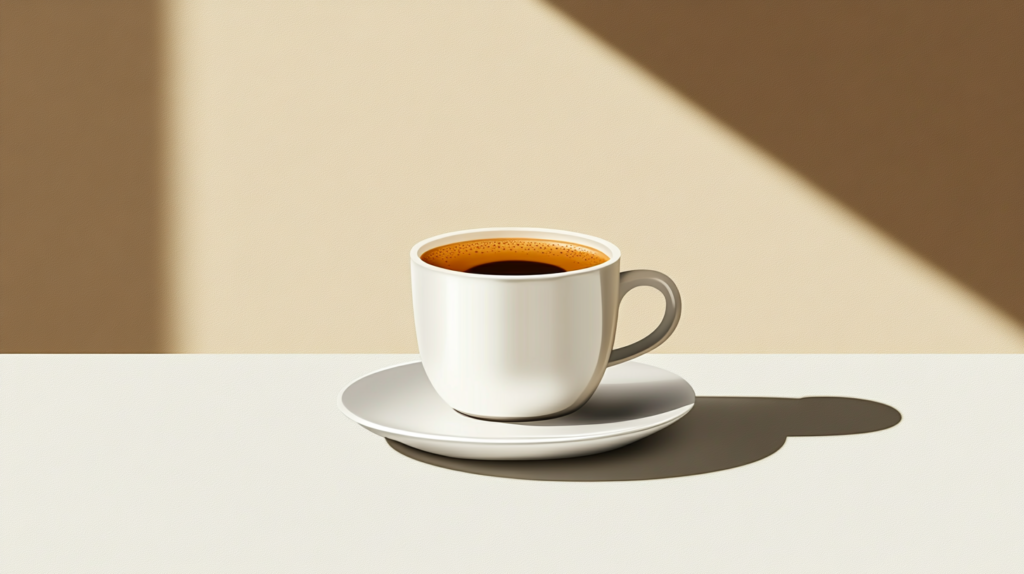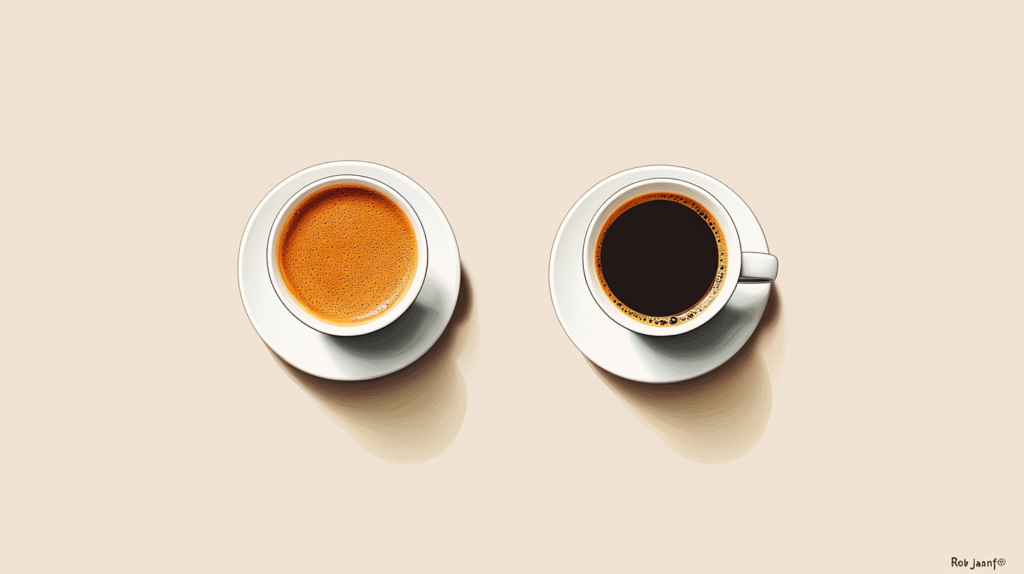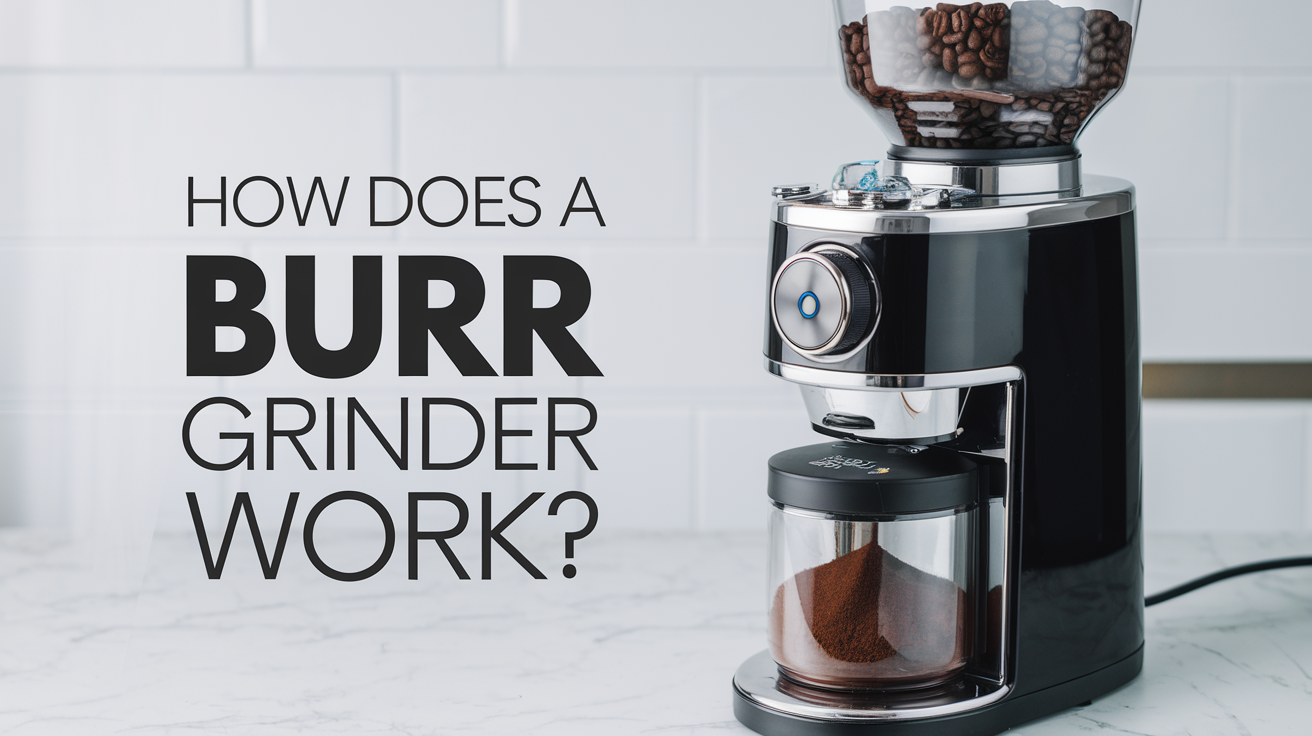Blog
Espresso Origins & Basics: A Comprehensive Guide
Welcome to the world of espresso, a beloved staple in the coffee culture that has captivated enthusiasts and casual drinkers alike. This comprehensive guide will take you through the journey of espresso, from its rich origins in early 20th century Italy, to the intricate process that goes into making a perfect shot.
Whether you’re curious about the difference between Arabica and Robusta beans, or you’re in the market for your very own espresso machine. You can dive into the nuances of espresso’s unique brewing method, learn about the variety of drinks it inspires, and discover how the quality of beans and water can elevate your coffee experience.
Whether you’re a seasoned barista or a newcomer to the coffee scene, this guide promises to enrich your understanding and appreciation of espresso, offering insights into the art and science that make it a global favourite.
Let’s embark on this flavourful journey together and explore the depths of espresso’s rich history, its basics, and everything in between.
What is Espresso?

Espresso is a highly concentrated coffee beverage, distinct for its rich flavour and creamy consistency. Originating from Italy in the early 20th century, it has become a cornerstone of coffee culture worldwide. The process of making espresso involves forcing a small amount of nearly boiling water through finely ground coffee beans, resulting in a small, potent shot of coffee.
This method extracts the coffee’s oils, flavours, and aromas, creating a strong and full-bodied drink that serves as the foundation for many popular coffee beverages, such as lattes, cappuccinos, and Americanos.
The unique preparation of espresso requires specialised equipment, namely an espresso machine, which can vary from simple manual devices to advanced automatic machines. The key to a perfect espresso lies in the balance of several factors: the fineness of the grind, the pressure used to tamp the coffee, the temperature of the water, and the pressure applied during the extraction process.
These elements work together to produce the espresso’s signature crema, a creamy, aromatic foam that floats on the surface, signifying a well-extracted shot. Espresso’s appeal goes beyond its taste and texture; it is also appreciated for its quick preparation time and concentrated dose of caffeine, making it a favoured choice for those seeking a quick energy boost.
The culture surrounding espresso is rich and varied, with enthusiasts and professionals alike constantly exploring new blends, techniques, and machines to enhance the espresso experience.
Whether enjoyed on its own or as the base of a more elaborate drink, espresso remains a beloved part of the global coffee tradition.
How Was Espresso Invented?

The invention of espresso can be traced back to Italy in the early 20th century. It was during this period that Luigi Bezzera, an inventor, sought a quicker method to brew coffee. He aimed to reduce his employees’ break times without sacrificing the quality of their coffee.
Bezzera’s innovative spirit led him to patent the first espresso machine in 1901, a landmark moment in coffee history. Bezzera designed a machine that utilised steam pressure to force hot water through finely-ground coffee beans. This innovative approach not only significantly cut down brewing time but also produced a strong, concentrated coffee – marking the birth of the first espresso.
Despite initial skepticism, Bezzera’s invention quickly gained popularity, especially among busy Italian workers who appreciated the quick preparation time. Bezzera’s invention laid the groundwork for modern espresso machines, revolutionising coffee brewing methods and giving rise to the rich espresso culture celebrated worldwide today.
His contribution to the coffee world was monumental, transforming the way coffee was consumed and setting the stage for the development of numerous espresso-based beverages.
In Italy, Early 20th Century
The journey of espresso began in Italy, during the early 20th century. This era was pivotal, laying the foundation for a revolutionary way to brew and savour coffee. Italy’s rich coffee culture provided the perfect backdrop for an innovation that would forever change the global landscape of coffee consumption.
The early adoption of Bezzera’s machine by Italian cafes and restaurants helped espresso to become an integral part of Italian society and culture.
By Luigi Bezzera, Seeking Quick Coffee Method
Luigi Bezzera, driven by a desire to expedite the coffee making process, embarked on a quest for a faster method. His goal was to reduce the coffee break durations of his employees without sacrificing the beverage’s taste or quality. Bezzera’s groundbreaking invention, the first espresso machine, utilised steam pressure to quickly force hot water through finely ground coffee beans.
This innovation not only sped up preparing coffee but also significantly enhanced its flavour and intensity, marking the birth of espresso. The success of Bezzera’s invention was a testament to his ingenuity and the beginning of a new era in coffee brewing.
What Are the Key Components of Espresso?
The essence of a remarkable espresso lies in its key components: coffee beans, the espresso machine, and precise pressure and temperature control. The choice between Arabica and Robusta beans plays a crucial role, as each offers distinct flavour profiles; Arabica beans are known for their sweet, soft taste, while Robusta beans are recognised for their stronger, more assertive flavour.
The espresso machine stands at the core of espresso making, designed to extract the coffee at the right pressure (around 9 bars) and temperature (about 90-96°C or 194-205°F), ensuring the coffee’s rich flavours and aromas are perfectly captured.
Together, these components work in harmony to create the intense, full-bodied shot of coffee that espresso enthusiasts cherish.
Coffee Beans

The foundation of an exceptional espresso lies in the coffee beans used. These beans, often darker because of a longer roasting process, are pivotal in defining the espresso’s flavour, aroma, and overall quality. This darker roast promotes the release of the beans’ natural oils and enhances the sweetness in the espresso.
Arabica vs. Robusta
Choosing between Arabica and Robusta beans is a critical decision in espresso preparation. Arabica beans are celebrated for their smooth, nuanced flavours, offering a spectrum of sweet to acidic notes. Robusta beans, conversely, pack a stronger, more bitter punch with a higher caffeine content.
This choice significantly influences the espresso’s flavour profile and intensity.
Espresso Machine
Central to the espresso-making process is the espresso machine, which is meticulously engineered to extract the essence of the coffee beans. Operating at high pressure, typically around 9 bars, it forces hot water through the finely ground coffee in a process that should ideally last 25-30 seconds for a single shot, culminating in the rich, concentrated essence of coffee we know as espresso.
Pressure and Temperature Control
Precise pressure and temperature control are indispensable for brewing the perfect espresso. The brewing temperature, ideally set between 90-96°C (194-205°F), combined with the optimal pressure, ensures the coffee’s flavours, acids, and oils are extracted just right. Mastery of these variables is what allows baristas to produce espresso that is harmoniously balanced in flavour, acidity, and body.
Espresso Machine Brands and Models
| Brand | Model | Type | Features |
|---|---|---|---|
| Breville | Barista Express | Semi-Automatic | Integrated grinder, precise temperature control, customisable settings |
| DeLonghi | Magnifica S | Automatic | Bean-to-cup, customisable espresso and milk frothing settings |
| Gaggia | Classic Pro | Semi-Automatic | Commercial-grade group head, robust design, manual frothing |
| Rancilio | Silvia | Semi-Automatic | Professional-grade components, exceptional durability, manual frothing |
| Jura | E8 | Automatic | One-touch operation, integrated grinder, fine foam technology |
Coffee Bean Varieties
| Bean Type | Varieties | Flavor Profile |
|---|---|---|
| Arabica | Ethiopian Yirgacheffe | Floral, fruity notes with high acidity |
| Colombian Supremo | Nutty, chocolate notes with medium acidity | |
| Robusta | Vietnamese Da Lat | Strong, full-bodied with a smooth, bitter finish |
| Indonesian Java | Earthy, woody flavours with a hint of chocolate and a smooth finish |
What Distinguishes Espresso from Regular Coffee?

Espresso is distinct from regular coffee primarily because of its unique brewing method. Unlike the traditional coffee brewing process that utilises gravity, espresso is crafted by forcefully pushing hot water through finely ground coffee beans under high pressure, typically at 9 bars. This method, which ideally lasts 25-30 seconds for a single shot, extracts a richly concentrated, flavour packed shot of coffee.
The fineness of the grind, much finer than what is used for drip coffee, is crucial for creating espresso’s signature rich crema and intense flavour profile. This technique not only produces a stronger cup of coffee but also accentuates the coffee’s subtle flavours, making espresso the foundation for a variety of other coffee beverages.
Brewing Method
The brewing method for espresso significantly differs from that of regular coffee, utilising high pressure to force hot water through finely ground coffee, creating a concentrated and deeply flavourful shot. This high-pressure extraction method is key to espresso’s distinct taste and texture, setting it apart from the slower, gravity-fed brewing process of regular coffee.
High Pressure, Short Time
Espresso’s unique character comes from the combination of high pressure and short brewing time. This method extracts intense flavours quickly, producing a rich espresso in just 25-30 seconds. In contrast, regular coffee brewing methods, such as drip or French press, take longer and use lower pressure, resulting in a lighter flavour profile.
Fineness of Grind
A key factor in espresso preparation is the fineness of the grind. Espresso beans are ground much finer than those used for drip coffee, which is essential for the high-pressure extraction process. The fine grind increases the surface area exposed to water, enhancing flavour extraction and contributing to the formation of the crema.
Much Finer than Drip Coffee
The grind for espresso is much finer than drip coffee, a crucial detail that facilitates the creation of espresso’s signature intensity and rich crema by maximising the surface area exposed to water. This fine grind is pivotal in achieving the concentrated flavour and creamy texture characteristic of espresso.
Pressure Used
Pressure used during the espresso brewing process is a defining aspect. At 9 bars, this pressure is optimal for extracting a concentrated shot of espresso, embodying a full-bodied flavour and creamy texture. The use of high pressure in espresso machines contrasts sharply with the natural gravity flow used in regular coffee brewing, leading to a quicker extraction time and a more intense flavour.
What Are the Basic Steps to Make Espresso?
Making espresso involves a series of critical steps that combine to produce a rich and flavourful shot. The process starts with grinding the beans to a fine consistency, a crucial step for achieving the dense, flavourful extract characteristic of espresso. For this, a burr grinder is recommended over a blade grinder, as it provides a more consistent grind size, crucial for optimal espresso extraction.
Finely ground coffee is tamped down evenly in the espresso machine’s portafilter. Proper tamping requires applying approximately 30 pounds of pressure to create a flat, even coffee bed.
Tools like a calibrated tamper can help achieve consistent pressure with each use. Proper tamping is essential for creating a uniform surface, allowing the hot water to press through evenly and ensure a consistent extraction. Finally, the espresso is extracted under high pressure for about 25-30 seconds.
This brief yet intense process yields a concentrated shot of coffee, crowned with a creamy layer known as crema, the signature of a well-crafted espresso. Each step, from the grind of the beans to the pressure and timing of the extraction, plays a pivotal role in the art and science of espresso making.
Grinding the Beans
The espresso journey begins with grinding the beans. Achieving a fine consistency is essential, as it sets the stage for optimal flavour extraction during the brewing process.
To a Fine Consistency
Grinding the beans to a fine consistency is crucial. This fine grind increases the surface area exposed to water, allowing for a more efficient and thorough extraction of the coffee’s rich flavours and aromas. A burr grinder ensures uniform size, which is key to a balanced extraction.
Tamping the Coffee
Following grinding, the coffee grounds are tamped down in the espresso machine’s portafilter. Proper tamping ensures the grounds are packed evenly, which is key to achieving a uniform extraction. A calibrated tamper clicks when 30 pounds of pressure is applied, offering a reliable way to tamp consistently.
Evenly to Ensure Uniform Extraction
Tamping the coffee evenly is vital. It creates a level surface that enables the hot water to flow through the grounds at a consistent rate, ensuring each particle of coffee contributes equally to the final shot. Practice and the right tools can make a significant difference in achieving the perfect tamp.
Extracting the Espresso
The climax of the process is extracting the espresso. This step involves forcing hot water through the finely ground and tamped coffee at high pressure, a method designed to yield a concentrated and flavourful espresso shot. Monitoring the extraction time closely, aiming for 25-30 seconds, ensures the espresso is neither under nor over-extracted.
25-30 seconds for a single shot
For a single shot, the extraction time should last 25-30 seconds. This precise duration allows the hot water to extract the coffee’s full flavour spectrum without over-extraction, which could lead to bitterness. Adjusting the grind size can help achieve the desired extraction time for a perfect shot.
What Types of Espresso Drinks Are There?
Espresso forms the base for a diverse array of coffee beverages, each offering a distinct flavour and texture experience by blending espresso with various ingredients. The Americano, Latte, and Cappuccino are just the beginning of what you can create with a good shot of espresso.
Below, find a detailed table that outlines the ratios of espresso to water or milk for these drinks, along with some popular variations that add a twist to the classic recipes.
| Drink Name | Description | Espresso | Water | Milk | Foam | Variations |
|---|---|---|---|---|---|---|
| Americano | A diluted espresso drink, less intense than a straight shot but retaining the espresso’s richness. | 1 shot (1 oz) | 3 oz | – | – | Iced Americano: Just add cold water and ice instead of hot water. |
| Latte | Creamy and smooth, lattes are popular for their balance of espresso and steamed milk. | 1 shot (1 oz) | – | 8 oz | A thin layer | Vanilla Latte: Add vanilla syrup to the mix for a sweet twist. |
| Cappuccino | Known for its equal parts of espresso, steamed milk, and frothy milk foam, offering a rich and velvety texture. | 1 shot (1 oz) | – | 2 oz | 2 oz | Cinnamon Cappuccino: Sprinkle cinnamon on top for a spicy note. |
How Does the Quality of Beans Affect Espresso?
The quality of beans plays a crucial role in defining the taste and aroma of espresso. High-quality Arabica or Robusta beans bring distinct flavour profiles that can dramatically elevate the espresso experience. Arabica beans are celebrated for their sweet, fruity, and acidic notes, contributing to a smoother espresso, while Robusta beans offer a stronger, more bitter flavour with a higher caffeine content, making for a more potent espresso.
The origin of the beans also significantly affects the flavour, as beans from different regions possess unique tastes shaped by the local climate and soil. The roast level directly influences the espresso’s body and intensity; darker roasts tend to yield a fuller-bodied espresso with pronounced bitterness. The selection of beans is a pivotal aspect of espresso brewing, with the potential to transform the character of the final cup.
To provide a clearer understanding, here’s a detailed table showcasing how the origin and characteristics of Arabica and Robusta beans affect espresso:
| Bean Type | Region | Flavour Profile | Altitude | Climate | Processing Method |
|---|---|---|---|---|---|
| Arabica | Ethiopia | Floral, fruity, with a hint of winey notes | 1,500 – 2,200 meters | Cool, mountainous | Mostly washed |
| Arabica | Colombia | Sweet, nutty, with a touch of fruity acidity | 1,200 – 1,800 meters | Tropical, high humidity | Washed |
| Arabica | Brazil | Chocolatey, nutty, with a more subtle acidity | 200 – 1,200 meters | Warm, relatively dry | Natural, pulped natural |
| Robusta | Vietnam | Strong, harsh, with a grain-like overtone and a peanutty aftertaste | Low altitudes | Warm, humid | Mostly wet processed |
| Robusta | Indonesia | Smoky, slightly woody, with a hint of chocolate and a strong body | Varies | Tropical, humid | Semi-washed |
| Robusta | Uganda | Earthy, powerful body, with a creamy texture and chocolate undertones | 1,200 – 1,500 meters | Warm, rainy | Natural, washed |
What Is the Importance of Water in Espresso Making?
Water is a critical component in the espresso-making process, profoundly influencing the quality and flavour of the final cup. The quality of water, whether it is soft or hard, plays a significant role in the extraction of flavours from the coffee beans, directly affecting the espresso’s overall taste profile. The temperature of the water is of utmost importance; it should be maintained around 90-96°C (194-205°F) to ensure optimal extraction.
This precise temperature range is key to unlocking the coffee beans’ delicate flavours and aromas, thereby creating a well-balanced and richly flavoured espresso. Therefore, both the quality and temperature of water are indispensable to brewing the perfect espresso.
Water Quality
The quality of water plays a pivotal role in the espresso-making process. It directly influences the extraction of flavours and aromas from the coffee, affecting the espresso’s overall taste. Ensuring the water is pure and clean is fundamental to achieving the best possible espresso flavour.
Utilising water filtration systems, such as charcoal or reverse osmosis filters, can significantly improve water quality by removing impurities and chlorine tastes that can negatively impact the espresso’s flavour.
Soft vs. Hard Water
The choice between soft and hard water can significantly affect the espresso’s flavour profile. Soft water is often preferred as it leads to less scale buildup in the espresso machine and facilitates a more effective extraction of the coffee’s flavours. On the other hand, hard water, with its higher mineral content, can alter the taste of the espresso and may cause maintenance issues with the machine over time.
Water softening treatments or using bottled water with a balanced mineral content can help mitigate these issues, ensuring the espresso maintains its intended flavour profile.
Temperature
Temperature is crucial for optimal extraction of espresso. Water should be heated to around 90-96°C (194-205°F). This specific temperature range is critical for efficiently extracting the rich flavours and delicate aromas from the coffee beans, ensuring the espresso is flavourful and well-balanced, with no bitterness or under extraction.
Precise control over water temperature can be achieved through the use of espresso machines with built-in temperature regulation features, allowing for consistent and ideal extraction conditions.
How Does One Choose an Espresso Machine?

Choosing an espresso machine requires evaluating several key factors to ensure it meets your individual coffee-making needs and preferences. The decision between a manual versus an automatic machine significantly impacts the brewing process’s control level and convenience.
Manual machines are ideal for coffee aficionados who relish a hands-on approach and wish to meticulously adjust every brewing parameter, while automatic machines are perfect for those seeking ease of use and consistency with just the push of a button.
The price of espresso machines spans a broad spectrum, from budget-friendly options to luxury models, necessitating a careful consideration of cost against the desired features and quality. Another practical aspect to consider is the size of the machine, which should comfortably fit within the allocated counter space.
To aid in this decision-making process, here’s a detailed comparison table of espresso machine features:
| Feature | Manual Espresso Machine | Automatic Espresso Machine |
|---|---|---|
| Control | High – allows for precise adjustments in pressure and temperature | Low to Medium – automated settings with some adjustable parameters |
| Convenience | Low – requires skill and time to operate | High – easy to use with consistent results |
| Milk Frothing | Manual – requires learning frothing techniques | Often includes built-in milk frother for convenience |
| Temperature Control | Manual – barista controls temperature | Automatic – machine maintains preset temperature |
| Ease of Cleaning | Varies – some models are easier to clean than others | Generally easier – many models have automatic cleaning cycles |
| Price Range | £100 – £2000+ | £200 – £3000+ |
| Size | Varies – from compact to large models | Varies – from compact models to larger ones with more features |
| Recommended for | Enthusiasts and those who enjoy the ritual of making espresso | Those seeking convenience and consistency with minimal effort |
Budget to High End Options:
- Budget-Friendly: Offers basic functionality without advanced features. Suitable for beginners or those with limited space.
- Mid-Range: Includes additional features such as programmable settings and better temperature stability.
- High-End: Offers superior build quality, precision, and control. Includes features like PID temperature control, pre-infusion, and high-quality milk frothing.
Size Considerations:
- Compact Designs: Ideal for small kitchens or spaces with limited counter space. May have fewer features.
- Larger Models: Offer more features and higher capacity but require more space.
When selecting an espresso machine, consider what aspects of espresso making are most important to you, whether it’s the ritual and control of manual brewing or the convenience and consistency of an automatic machine.
Conclusion
Espresso, a hallmark of coffee culture globally, is celebrated for its rich history and complex brewing process. Its distinctive preparation, which requires finely ground beans, precise pressure, and optimal temperature, results in a concentrated and deeply flavourful shot. This serves as the foundation for various beloved coffee drinks.
The selection of coffee beans—considering type, origin, and roast level—is crucial in shaping the espresso’s flavour profile. Choosing the right espresso machine, whether manual or automatic, involves balancing factors such as price, size, and a preference for control versus convenience. By comprehending the fundamentals of espresso, from its origins and key components to the intricacies of bean selection and machine options, coffee lovers are equipped to create their ideal espresso experience.
This knowledge reflects the enduring tradition and artistry behind espresso making, inviting enthusiasts to explore and enjoy the rich tapestry of flavours it offers.


